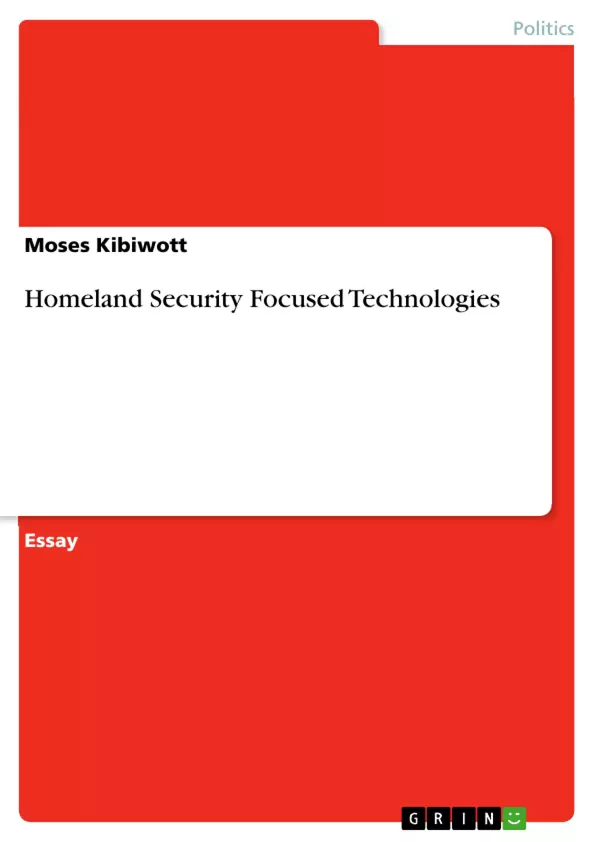The United States of America has made enormous strides towards securing its boarders since the 9/11 attack. Following the attack the federal government has developed frameworks to include technologies in preventing large scale attacks. One of the key frameworks was developing the Department of Homeland Security. The types of homeland security technologies are varied as the threats the government face. According to the department of Homeland Security there are certain technologies have emerged over the years.
Inhaltsverzeichnis (Table of Contents)
- Security Technology since 9/11
- Remote Controlled Airlines
- Bio-Monitors and Explosive Trace Detection Devices
- Biometric Identification
- Intelligence and Law Enforcement
- Boarder and Physical Security Infrastructure
- Aviation Security
- Countermeasures against Nuclear and Biological Threats
- The "Left of Boom" Strategy
- Surveillance Technologies
- Privacy Concerns
- Impact on Security and Travel
Zielsetzung und Themenschwerpunkte (Objectives and Key Themes)
This text examines the advancements in security technology implemented in the United States following the 9/11 attacks. It explores how these advancements have impacted different sectors, including aviation, border security, intelligence, and law enforcement.
- The evolution of security technology in the US post-9/11
- The impact of these technologies on various sectors
- The shift from reactive to proactive security measures
- The challenges and controversies surrounding the use of surveillance technologies
- The importance of balancing security with privacy
Zusammenfassung der Kapitel (Chapter Summaries)
This text begins by discussing the development of technologies to prevent terrorist attacks, such as remote-controlled airlines and bio-monitors. It then delves into the use of biometric identification, data mining software, and improved communication systems for intelligence gathering and law enforcement. The text explores the advancements in border and physical security, with a particular focus on the aviation sector. It further examines the development of countermeasures against nuclear and biological threats, including the implementation of a "left of boom" strategy.
The text highlights the role of surveillance technologies in identifying terrorism suspects and the ethical concerns related to privacy infringement. It concludes by discussing the positive impact of these technologies on passenger safety and travel, while acknowledging the need for ongoing vigilance and development in the face of evolving security threats.
Schlüsselwörter (Keywords)
The text focuses on homeland security technology, terrorism countermeasures, biometric identification, surveillance technologies, data mining, privacy concerns, and the "left of boom" strategy. It also explores the development of countermeasures against nuclear and biological weapons and the importance of improving communication and intelligence gathering.
- Quote paper
- Moses Kibiwott (Author), 2015, Homeland Security Focused Technologies, Munich, GRIN Verlag, https://www.grin.com/document/513983



